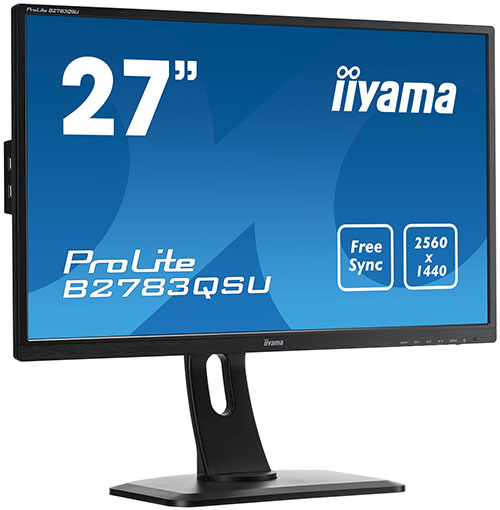FreeSync, conclusion
We used a Sapphire R9 390X graphics card for testing the gaming credentials of the iiyama. It's a good choice because it can pump out the FreeSync sweetspot framerates for this monitor - 48-70Hz - with excellent image quality.
Playing through our suite of games offers a smooth experience when the framerate is between these two relatively narrow bands. Motion is smooth, there's minor evidence of ghosting, which can be further reduced by overdriving the panel from the OSD, and should you be able to maintain the framerate, the setup is, in a word, nice. Shadow of Mordor, in particular, almost always stays within this zone throughout 30 minutes of gameplay, backed by looking at the current FRAPS framerate in the top-left corner.
But you do know as soon as you fall out of the sweet FreeSync zone. The Witcher 3, for example, drops to 40-50fps on occasion thus leaving the usual jerkiness on show. This is why we believe that all variable refresh rate monitors need to have a minimum active zone at an effective 35-40fps.
Is it better than a non-FreeSync monitor? Of course, and if you have your games tuned to be in the B2783QSU's sweetspot then it's a fine choice for the gamer that has gone down the AMD route. iiyama has had to balance the competing interests of the cost of the TN panel against the wishes of a wider FreeSync range. We reckon it's a gamble that pays off if you're a semi-casual gamer with a reasonable budget.
Wrap
Ticking a lot of the boxes we expect to see, impressively so given the price, we believe it to be worthy of a demonstration for a future gaming build.iiyama has set its stall out to provide a variable-refresh gaming monitor that's also pleasant to use in an everyday environment. The FreeSync 'tax', if we can call it that, is negligible for a screen that retails for under £250. And it's rather good in workhorse 2D mode, with accurate colours and above average uniformity and luminance readings.
We would really like a wider FreeSync scale to cater for those games when the framerate drops to 40fps or so. And a higher top-end refresh rate wouldn't go amiss either, though we understand the economics of doing so would make this monitor more expensive.
What we're left with is a good value screen that appeals to the gamer who runs AMD graphics hardware. Ticking a lot of the boxes we expect to see, impressively so given the price, we believe it to be worthy of a demonstration for a future gaming build. Strong in certain areas and displaying, if you forgive the pun, no obvious weaknesses, iiyama is on the right track with the ProLite B2783QSU.
Good, solid design
Very good in 2D
iiyama ProLite B2783QSU
HEXUS.where2buy*
The iiyama ProLite B2783QSU is available to purchase from Scan Computers.
HEXUS.right2reply
At HEXUS, we invite the companies whose products we test to comment on our articles. If any company representatives for the products reviewed choose to respond, we'll publish their commentary here verbatim.
*UK-based HEXUS community members are eligible for free delivery and priority customer service through the SCAN.care@HEXUS forum.















